Naggar Castle, perched in the Kullu Valley of Himachal Pradesh, is a historic marvel that blends medieval architecture, natural beauty, and local art. Built in the 15th century by Raja Sidh Singh of Kullu, this castle showcases the unique Kath-Kuni architectural style, which uses stone and wood to withstand earthquakes common in the region. Naggar Castle now serves as a heritage hotel and a cultural landmark, attracting visitors eager to explore its royal past, stunning views, and ancient charm.
Architectural Beauty and Design
Naggar Castle stands out with its Kath-Kuni style, a traditional Himachali architecture that utilizes interlocking wood and stone for earthquake resistance. Its distinctive wooden balconies, ornate carvings, and scenic courtyards offer panoramic views of the Beas River and the surrounding mountains. The castle’s design reflects Kullu’s local traditions, blending Tibetan, Pahari, and Western influences, giving it a rustic yet regal appeal.
History and Significance
Built as a royal residence, Naggar Castle held strategic importance and was used by the Kullu kings for centuries before being converted into a heritage hotel in 1978 by the Himachal Pradesh Tourism Development Corporation. The castle is not only a testament to the region’s royal heritage but also a symbol of architectural resilience. Each element, from the stone walls to the intricately carved wooden beams, speaks of the skill and craftsmanship of local artisans.
Points of Interest in Naggar Castle
Jagatipatt Temple: Within the castle complex, the Jagatipatt Temple is a sacred site featuring a stone slab believed to have been carried by honeybees from the Beas River. It is dedicated to the goddess of the Kullu Valley, adding a spiritual aura to the castle.
Art Gallery and Museum: The castle has an art gallery and museum showcasing a collection of Russian painter Nicholas Roerich’s artwork, who made Naggar his home. The gallery preserves his works and offers insights into his contributions to Himalayan art and culture.
Stone and Wood Balcony: The main balcony, with its wooden and stone structure, is an excellent place to enjoy panoramic views of the Kullu Valley, often the highlight for photographers and travelers.
Restaurant and Café: The castle also houses a café and restaurant that serve Himachali cuisine, allowing visitors to enjoy local flavors with breathtaking views of the surrounding mountains.
Activities and Attractions Near Naggar Castle
Nicholas Roerich Art Gallery: Dedicated to the Russian painter and his family, this gallery is a few minutes from the castle and offers a serene place to admire Roerich's paintings of the Himalayas.
Gauri Shankar Temple: An 11th-century Shiva temple near Naggar, known for its intricate stone carvings.
Trekking and Nature Walks: The surrounding area offers scenic trekking trails to nearby villages, forests, and waterfalls, like the Jana Waterfall.
How to Reach Naggar Castle
Naggar Castle is easily accessible:
By Road: It is around 20 km from Manali and 22 km from Kullu, well-connected by local buses and taxis.
By Air: The nearest airport is Bhuntar Airport, about 32 km away.
By Train: The closest major railway station is Joginder Nagar, roughly 125 km away.
Best Time to Visit
The ideal time to visit Naggar Castle is March to June (spring and summer) and September to November (autumn), when the weather is mild and perfect for sightseeing. Winter offers snow-laden views, but temperatures can be quite cold.
Naggar Castle offers a unique experience combining history, architecture, and natural beauty. It’s not just a destination for history buffs but also a peaceful retreat for anyone wanting to experience Himachali culture and the splendor of the Kullu Valley. Whether you're walking through its ancient halls, enjoying local Himachali dishes, or admiring the views of the Himalayas, a visit to Naggar Castle is a journey through time and tradition.
Related Blogposts :
 Langza Village - Popular place in Spiti Valley of Himachal Pradesh known for huge Buddha Statue at an altitude of 14,500 feet and spotting wild animals like Snow Leopards & Himalayan Ibex
Langza Village - Popular place in Spiti Valley of Himachal Pradesh known for huge Buddha Statue at an altitude of 14,500 feet and spotting wild animals like Snow Leopards & Himalayan Ibex





















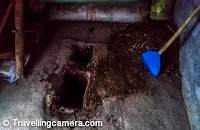
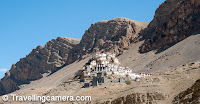
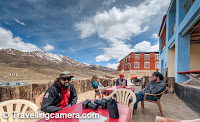
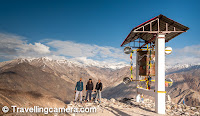
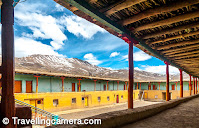


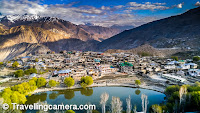

.jpg)
Comments